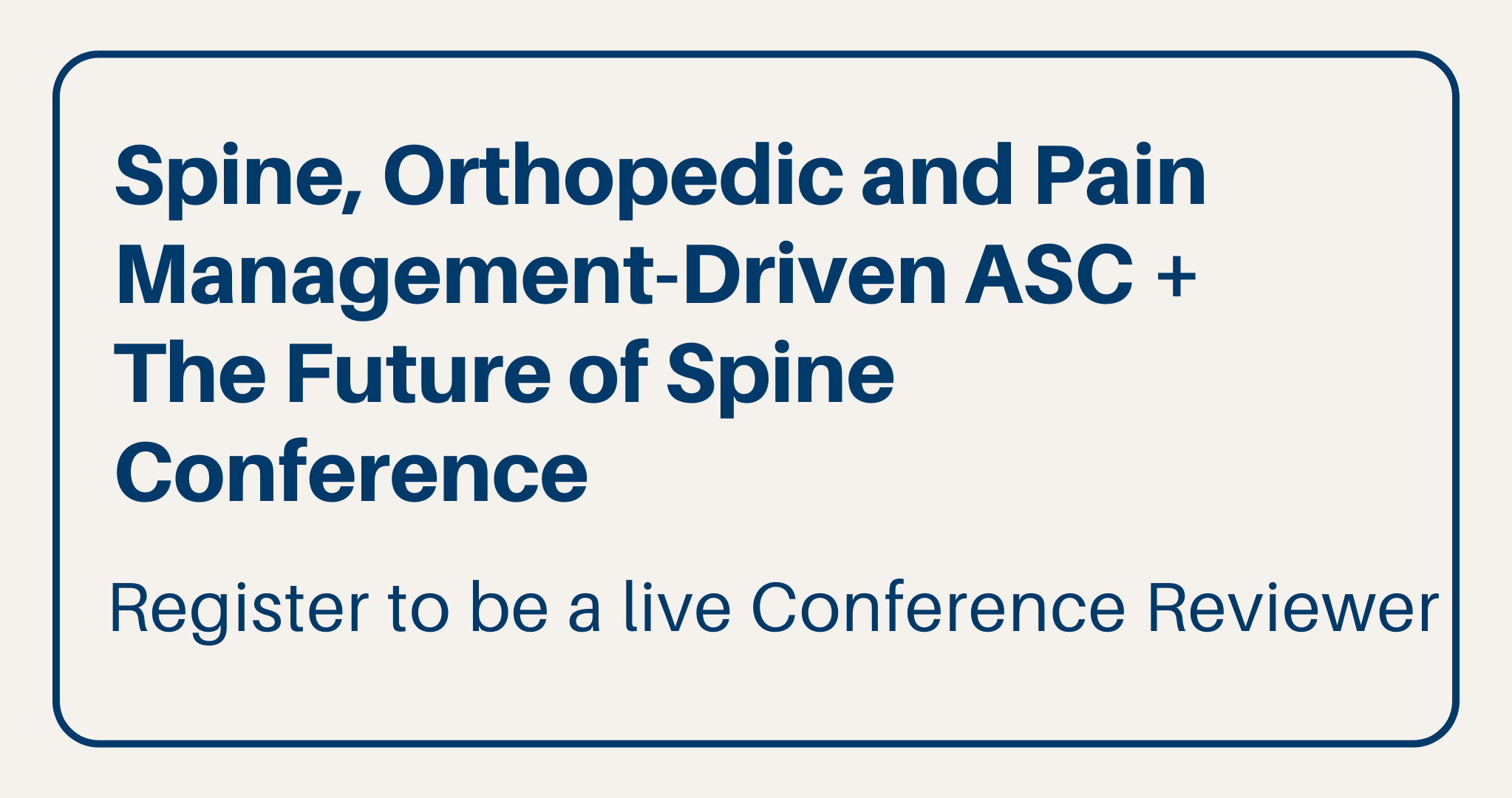Over the past two decades, endoscopic spine surgery has steadily increased in popularity as minimally invasive techniques continue to evolve. However, the approach is more widely adopted among surgeons in Europe and Asia.
Here, three spine surgeons provide their insight on the technique's training and reimbursement structure and why it's not as popular in the U.S. as in some foreign countries.
Note: Responses are lightly edited for style and clarity.
Question: How do you see endoscopic spine surgery developing in the U.S.? Why do you think it hasn't been more widely adapted like it has overseas?
Kris Radcliff, MD. Rothman Institute (Philadelphia): I've done training for the big three endoscopic systems, but I have not incorporated endoscopic spine surgery much into my practice. There are some clinical issues and some logistical issues that have limited my adoption of the technique. Clinically, I do not have a good sense of the best pathology to treat with this approach versus a traditional microdiscectomy. The current literature is mostly retrospective case series that are somewhat subject to selection bias.
Although the results are favorable, clearly there are some situations where endoscopic discectomy is not the ideal technique. Consequently, there is limited insurance coverage for the new current procedural terminology code for endoscopic spine surgery. Overall, I think that the adoption of endoscopic decompression techniques will be limited in the U.S. until there is a good literature about the best clinical indications and wider insurance coverage, such as far lateral soft disc herniations.
Raymond Gardocki, MD. Campbell Clinic (Nashville, Tenn.): Endoscopy has been around for a while, but in the early days the optics were poor. I think there were some people pushing endoscopic spine surgery who promised it could do more than it actually can. That left a bad taste in peoples' mouths, especially in the spine community. There's a greater risk of liability in the U.S. than other countries so people don't want to be the first person to do something. I started doing outpatient lumbar fusions in 2008 and it weighed heavily on my mind because I was basically outside the standard of care. If I had any complications, it would have been very hard to defend. But it's slowly becoming accepted now.
Having had that experience, I felt I could tackle the endoscopic aspect. Fundamentally, I think it's better. It's less invasive, not only intuitively, but there are studies that show inflammatory mediators are lower after an endoscopic approach than even a tubular approach. It's objectively less invasive; it allows us to do surgery on patients that are awake so you can avoid the risk of general anesthesia, which can be significant in the elderly population. You also get instant feedback — you can sometimes tell while the patient is on the table if they're better because you can ask them how their leg feels.
Tony Mork, MD. Newport Beach (Calif.): First, there's little to no comprehensive training readily available. As far as I'm aware, the only training program in the U.S. that includes formal training for endoscopic spine surgery is at the University of New Mexico in Albuquerque. The endoscopic approach uses a totally different skillset than open surgery and requires a relearning of the anatomy. When you start to look at the spine through a scope, it's very different at first. Any problems encountered, for example a dural tear or bleeding, must be taken care of through the scope. This takes a little patience and a lot of practice to feel comfortable.
The second reason is that the reimbursement is not very good. The equipment is expensive: A diamond burr, used for bone work, can cost up to $1,900 per burr. So, if the facility isn't being reimbursed adequately then it becomes a financial issue. Endoscopic spine surgeries are mostly outpatient procedures, so hospitals are concerned because they're not getting adequately reimbursed. Also, it's the physicians that decide between an endoscopic procedure and a fusion for a given condition. So, if the outcomes may be similar, some physicians might do a fusion because the reimbursements are so much better. If the reimbursement structure were a little better on the facility and physician side, I think it would be tremendously more popular.


